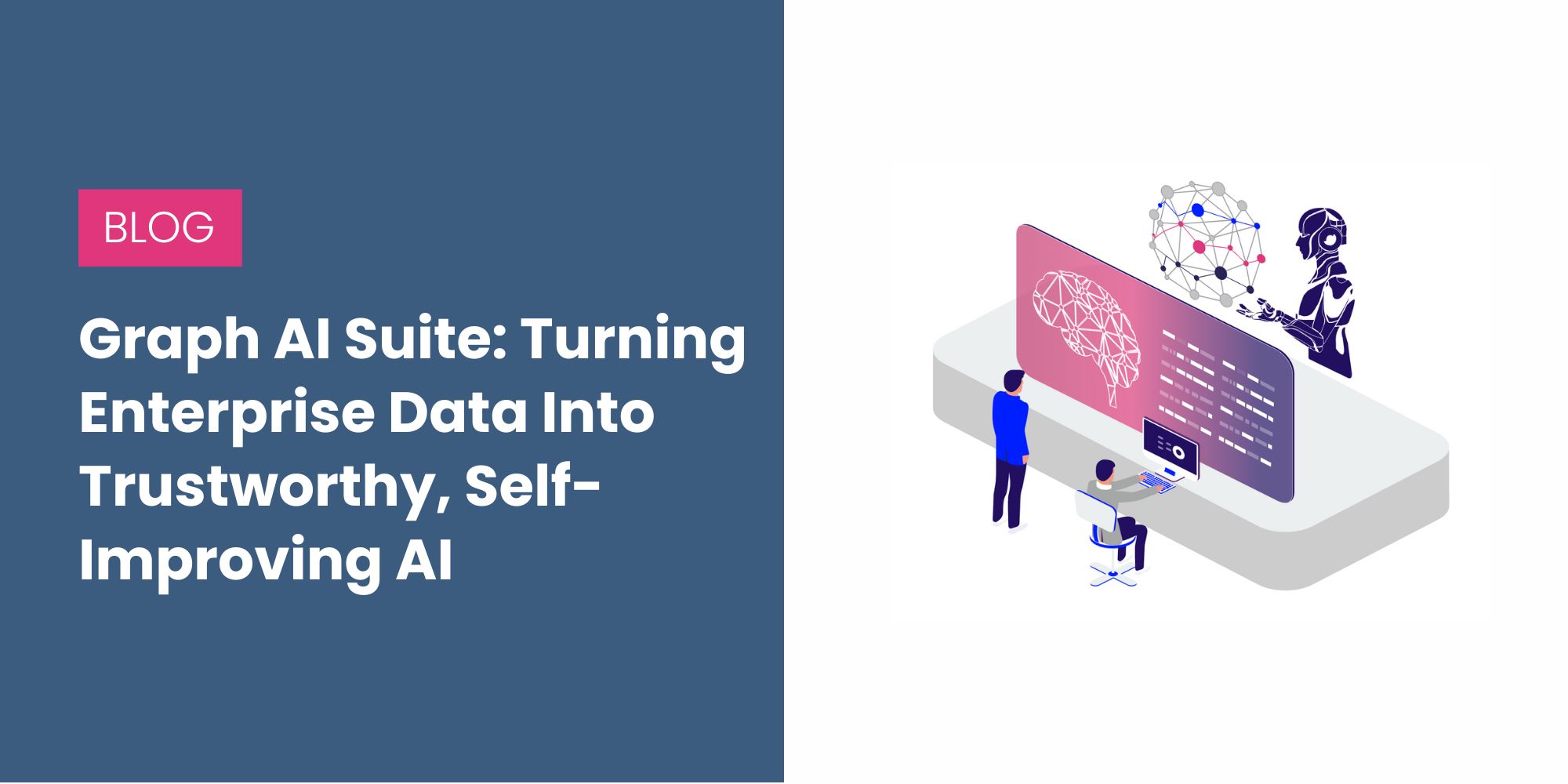A quick look at how Graphwise’s Graph AI Suite transforms enterprise data into self-improving knowledge graphs that deliver accuracy and trust.

Enterprise AI initiatives often stumble over a fundamental problem: getting accurate, reliable answers from systems that need to understand complex business knowledge. Vector-based RAG models can retrieve information quickly, but they frequently miss the nuanced relationships and context that make answers truly useful. For businesses trying to move beyond proof-of-concept AI projects into production systems, this gap between retrieval and understanding creates real risk.
When accuracy isn’t optional
Avalara, one of Graphwise customers and a global provider of tax technology software, experienced this challenge firsthand. Their vector-based RAG model couldn’t deliver the precision needed for mission-critical tax applications, where a wrong answer can have serious financial consequences. After implementing a DOM GraphRAG system, they were able to use their existing DITA structured content to build a reliable knowledge graph foundation.
“Human-curated, structured content is crucial for building trustworthy AI solutions,” said Michael Iantosca, Senior Director, Content Platforms & Knowledge Engineering at Avalara. “The knowledge graph-powered intelligent content improved business metrics and established a foundation for continuous improvement.”
This use case demonstrates how structured, curated content can make a measurable difference in AI reliability, particularly in domains where accuracy is non-negotiable.
A different approach to graph AI
Graphwise’s Graph AI Suite addresses this challenge head-on. It transforms how organizations turn their enterprise data into knowledge that AI systems can use reliably. Its built-in AI Flywheel creates a self-improving system where the knowledge graph gets smarter as it’s used, reducing the ongoing effort required to maintain accuracy.
Most graph AI solutions require piecing together separate tools and frameworks from multiple vendors. Graph AI Suite takes a different approach by providing a one-stop-shop that includes modeling tools, connectors, a graph database, and an AI workbench in one place. This approach reduces complexity as well as the costs associated with integrating and connecting disparate systems.
It also lowers technical barriers, making it possible for enterprise end-users to design their own AI solutions without extensive specialized knowledge. By providing AI-ready data and content at scale, the Graph AI Suite supports the development of precise AI applications and agents that are free of hallucinations.
“The global demand for knowledge graphs is rapidly increasing, driven by their role as essential components for grounding LLMs and their use in building enterprise-wide semantic layers,” said Andreas Blumauer, Senior Vice President of Growth at Graphwise. “Our new Suite is uniquely positioned to lead advancements in the GraphRAG space and enables customers to easily gain access to the data and knowledge needed to support high-performance AI-driven data integration and analytics.”
Core platform capabilities
The Graph AI Suite delivers AI-ready data and content through four integrated capabilities that work together to create a foundation for trustworthy AI applications.
Modeling & Mapping: This capability allows organizations to build a graph from structured and unstructured data, including automated taxonomy building. It helps them mature from “text on a document” toward “structured content” and, eventually, a knowledge graph, improving GraphRAG performance.
Ingestion & Automation: Designed to work in any enterprise setup, these components connect to arbitrary systems and support specific use cases for each organization. The system works seamlessly with various LLMs including Gemini and Llama, as well as agentic AI platforms like Microsoft Copilot Studio. This flexibility allows organizations to integrate the Graph AI Suite into their existing AI infrastructure.
Semantic Analysis: This capability automates the creation of taxonomies and enterprise vocabularies. It drives semantic metadata enrichment across data silos in a performant and cost-efficient way. As a key part of the AI Flywheel, it makes Graph AI Suite accessible to subject matter experts. The result is a more accurate GraphRAG infrastructure across the enterprise.
GraphRAG: This is the Graph AI Suite’s central feature for delivering trustworthy AI. It uses the knowledge graph to provide the LLM with accurate, context-rich, and semantically relevant data. This approach mitigates hallucinations and ensures responses are grounded in verifiable facts.
Looking ahead
The demand for knowledge graphs continues to increase as organizations recognize their importance in GenAI applications and enterprise-wide semantic layers. Graphwise’s Graph AI Suite represents a practical step forward in making knowledge graph technology more accessible to enterprises. By unifying essential tools and automating key processes, it addresses many of the friction points that have slowed knowledge graph adoption.
For those interested in seeing Graph AI Suite in action and to learn more about how GraphRAG can speed AI readiness, Graphwise is hosting the AI Summit 2025 online on October 22-23rd. It will feature speakers from EY, Takeda, Roche, and other big implementers of knowledge graph technology.
